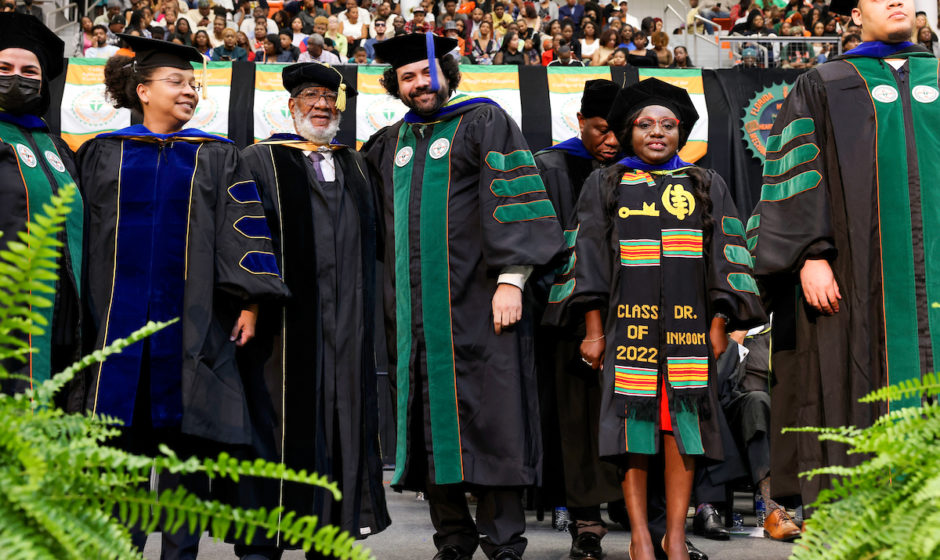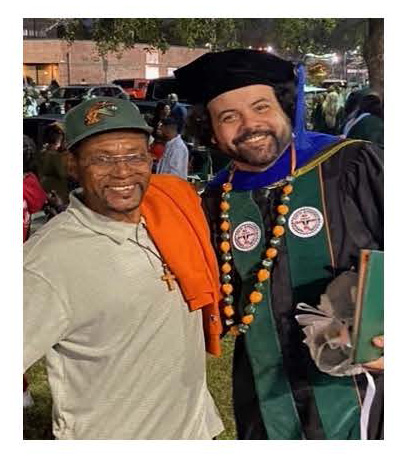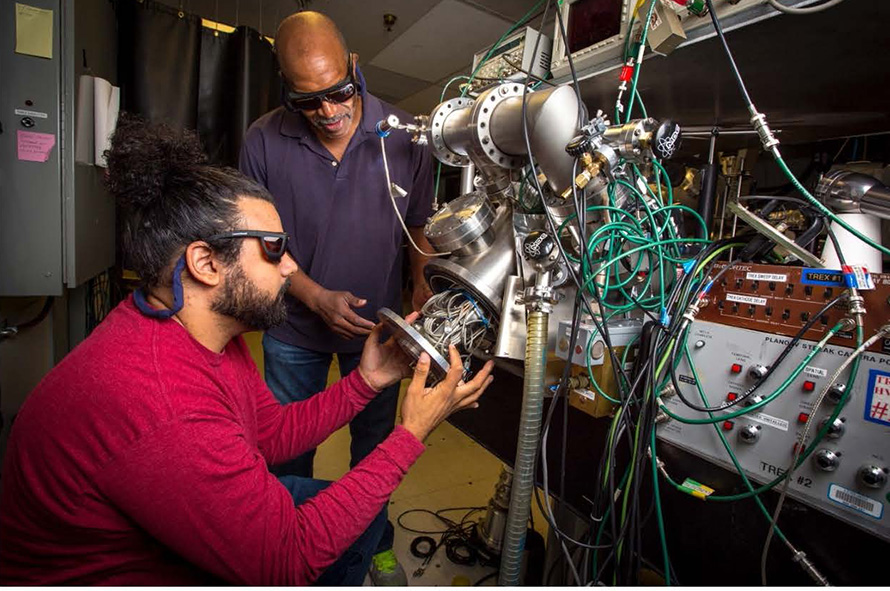FAMU Physics Ph.D. Graduate Performs Research in Support of the Lawrence Livermore National Ignition Facility

Among the 600 Florida A&M University (FAMU) graduates earning degrees during the fall 2022 commencement was Jerry Clark,Jr., who earned a Ph.D. in physics.
Originally from Miami, Clark attended Booker T. Washington Sr. High School before attending FAMU, where he earned his bachelor’s and master’s in physics and completed his doctoral coursework. He then headed west to conduct research at the Lawrence Livermore National Laboratory (LLNL) High-Energy Density Center in Livermore, California, under the direction of FAMU Physics Professor Ronald Williams, Ph.D., and Lawrence Livermore physicist Ronnie Shepherd, Ph.D.
 Jerry Clark and his dad Jerry Clark, Sr.
Jerry Clark and his dad Jerry Clark, Sr.
His dissertation, titled “Investigation of Electron-Ion Equilibration in High-Energy-Density Plasmas Using Time-Dependent Stark Broadening,” involved research on the behavior of materials under high pressure.
“I’ve always had a curiosity for the world around me, and physics gave me a way to start getting some answers,” said Clark, who added that while he did not directly contribute to the recent fusion ignition breakthrough at LLNL, he was proud to be part of the supporting framework. “In my work, I study electron-ion temperature equilibration. When a short-pulse laser interacts with matter, the electrons are rapidly heated while the ions remain cold, through collisions the electrons and ions are brought to a common temperature. With times on the order of picoseconds, this process is investigated by the analysis of the x-rays emitted from this plasma utilizing the LLNL TREX ultrafast streak camera.”
Clark’s work was supported by the FAMU Department of Energy’s Center for High Energy Density Science grant for which Charles Weatherford, Ph.D., FAMU vice president for Research Weatherford, is the principal investigator.
 Jerry Clark and Physicist Ronnie Shephard prepare for tests on an x ray streak camera
at the Jupiter Laser Facility. (CREDIT: Jason Laurea)
Jerry Clark and Physicist Ronnie Shephard prepare for tests on an x ray streak camera
at the Jupiter Laser Facility. (CREDIT: Jason Laurea)
The FAMU Center for High Energy Density Science receives $1 million annually to pay for stipends, living expenses, equipment and travel for FAMU Ph.D. students who have completed their coursework and are now conducting research at LLNL, Weatherford said.
“This research is ongoing in support of the LLNL NIF (National Ignition Facility) fusion research,” Weatherford said.“They have world class facilities that we can’t match here at FAMU.”
On December 13, the U.S. Department of Energy and the National Nuclear Security Administration (NNSA) announced a major achievement of fusion ignition at Lawrence Livermore National. Fusion ignition is considered a major scientific breakthrough decades in the making and is expected to pave the way for advancements in national defense and the future of clean power. This first-of-its-kind feat is expected to provide the unprecedented capability to support NNSA’s Stockpile Stewardship Program and will provide invaluable insights into the prospects of clean fusion energy. This development could be a game-changer for efforts to achieve the Biden administration’s goal of a net-zero carbon economy.
Jessica Tucker, Yaye Badjo, and Adeola Aghedo are the three other FAMU Ph.D. physics students conducting research at LLNL. All three students will be working in the High Energy Density Science Center at LLNL, Weatherford said.
“All of their research is being done in support of the NIF at LLNL which is totally concerned with fusion,” Weatherford said. “The FAMU students are producing data which informs the machine learning code being used to increase the energy output of NIF. We are making a major contribution to that experiment. We have a lot more to contribute. We are just getting started.”



